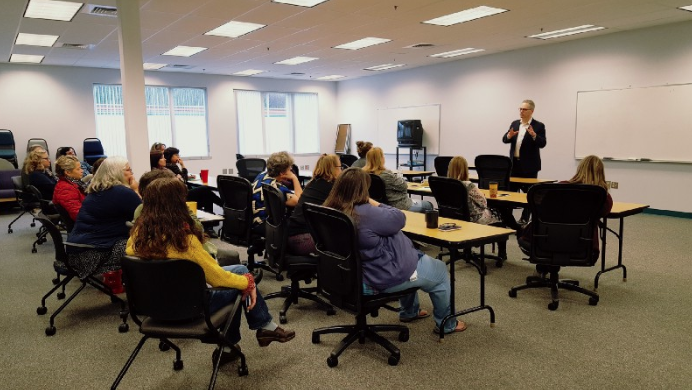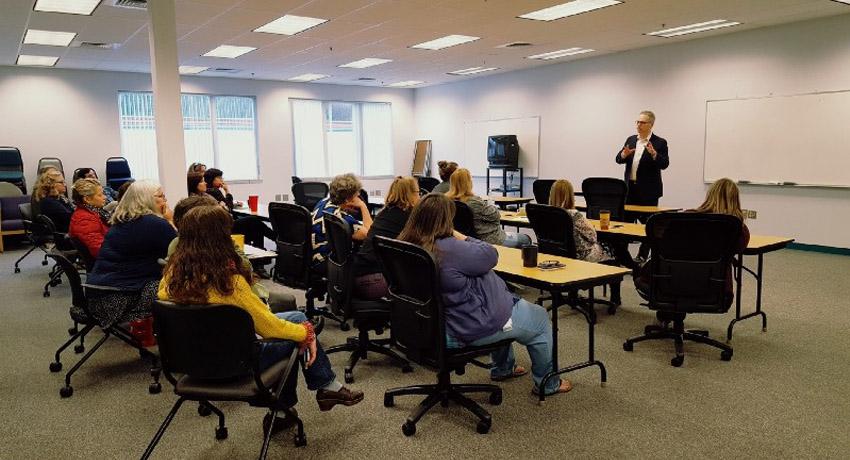I am eager to share with you a brief update on our progress toward building an organizational structure for the Department of Children, Youth, and Families. As with many of the tasks we face, there are relentless deadlines pushing us to make decisions. Lots of discussions are taking place about how we can most effectively organize the work DCYF will do and I want to share with you where we are. If you want to watch a short video of me discussing this topic, click below.
We’ve said repeatedly that this isn’t a reduction-in-force exercise. This was true in August, it’s true today and it’ll still be true tomorrow. There will be some changes that result from the reorganization, but for the vast majority of staff, things won’t change significantly.
We intend to have a limited number of positions for whom candidates will be interviewed. For example, we posted the HR director position last week because we need that person on board as soon as possible to help with the human resource transition work. Similarly, we’re posting a position for director of our tribal affairs and collaboration work in the next week or so once we have more discussion with the tribes about the role and responsibilities. I would expect fewer than 20 positions will require interviews. We will provide links to open job postings on our website going forward.
Think about it for a few minutes. We’ll still be doing child welfare casework in Wenatchee in July and we’ll still need all the caseworkers, supervisors, managers, etc. that we have today. We’ll still be licensing child care and managing early childhood education programs, and answering the phones.
With that said, here’s a broad outline of our current thinking. We still have a lot of issues to work out, and would value your feedback and/or questions.
We break the work of the agency into five buckets, each reporting directly to the secretary:
The Office of Innovation, Alignment, and Accountability. OIAA is our research effort and has responsibility for building the framework we use to think about the work we do. It manages our outcome measures, coordinates work among program groups and other agencies and will design our performance-based contracting effort. One of the key responsibilities here is ensuring that DCYF stays focused on eliminating the racial disparities we see in the system today.
The Operations and Infrastructure group is responsible for building the internal and external infrastructure we use to provide services for children. This group manages our back office services (IT, HR, finance, etc.), licensing, services for providers (background checks, payments, eligibility, professional development, etc.), our agency rules coordinator for Washington Administrative Code and policy, and a group that performs internal audits (mostly case and fatality reviews, contract performance issues, etc.) You can think about the Operations and Infrastructure group as focused on helping internal staff and the nonprofit/for-profit partners we depend on to function.
The Programs for Children and Families group will be responsible for exactly that — programs that serve kids and families. What we do that touches kids and families directly will be in this (large) group. This includes the fieldwork part of CA plus four collections of programs that reflect our current thinking about how we manage our analytical framework and our interest in building mutually supportive programs. In many cases, much of work these groups do is curate networks of high-quality providers and make sure that all the mechanisms are in place to improve outcomes for kids in significant ways. Here are some broad examples, without being all-inclusive at this time.
- Family support — programs that provide support to families, often of young children, such as home visiting, ESIT, FAR and other evidence-based programs.
- Early learning — the Working Connections Child Care program, ECEAP, etc.
- Child and family health and safety services — child care and foster care licensing, child protective services.
- Out-of-home care — all of the programs that support kids involved in the dependency system, such as foster care, relative care, in-home BRS, congregate care, adoption support, etc.
- Adolescents — consolidates our expertise in dealing with adolescents, and will likely include Juvenile Rehabilitation, foster care to 21, transition services, etc.
Communications and Outreach will be responsible for all the usual communications of an agency, including managing our extremely complex advisory group system and our legislative activities. I think I counted more than 40 formal and informal advisory groups that need to be managed. (We are likely to pare this down to a more manageable number.)
Tribal Affairs and Consultation group. Our tribal group will coordinate our work across all our lines of business with our tribal and recognized American Indian organization partners, including support in the field for tribes interacting with us. This is complex, but is not a huge group in the context of the full DCYF structure. Look for more information soon on the details of this group.
In addition to these five groups, we’re looking at some changes in how we coordinate our regional work. With input from staff and stakeholders, the DCYF mission team has recommended that we move all our programs to a six-region structure. For CA and JR, this will be going “back to the future” with the old DSHS regions. The three regions CA uses today are too large to get a feel for local communities and slow down decision making. Every program at DEL has a completely unique regional structure, which makes coordination challenging. We will formally decide this by the end of January as we need to check back with all the groups we got feedback from to make sure this will work. Check out the report on the work that went into this recommendation here.
In each of the regions we’re working on a structure that would allow us to have some “regional coordinator” positions to be responsible for the complete array of services for children in that region, making sure there aren’t missing parts, connecting them to each other and getting the balance right for that region. We’ll push some resource decision making out to the regions so we can customize the mix appropriately: Walla Walla is not the same as West Seattle.

Meeting with staff in Port Angeles.
We still have lots of work to do on this, including incorporating your feedback. By the end of January, we’ll have mapped our existing org charts to this new model and solved many problems that a new structure creates. We also need to work out the timing issues with the JR move. We’re including it in this level of planning but are going to need to think about the timing of moves carefully. We’re making sure to hold positions open for people in JR, and will do some complicated gyrations in the meantime to make this possible if we have to. We’re committed to giving everyone meaningful work that uses their skills and contributes to improving outcomes for kids.
This is a brief overview of our current thinking about how we organize ourselves to get the work of improving child well-being done. You’ll hear more from me over the next several weeks on this and a host of other issues.
Sincerely,
Secretary Ross Hunter

